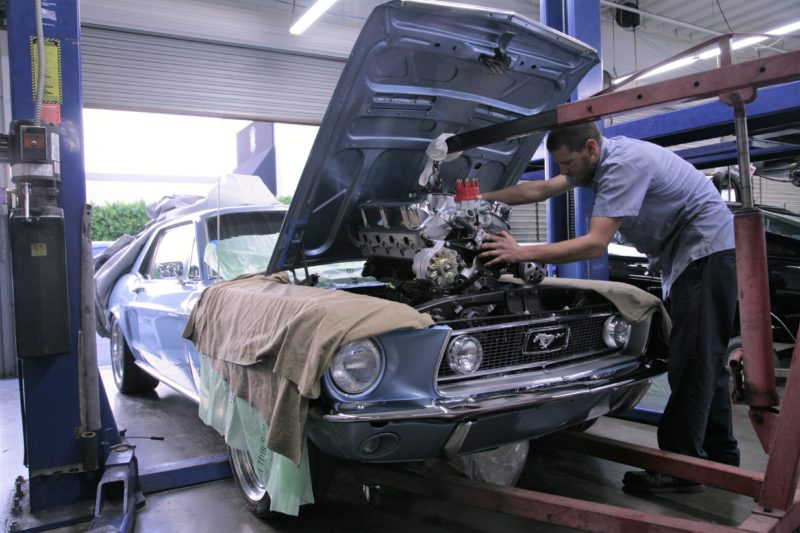
(Image/Christopher Campbell)
In the first installment of our ’68 Mustang project build, we detailed the pre-install prep on our 408 cubic-inch Windsor from BluePrint Engines that would replace the original 289.
Now it’s time to get it under the hood along with all the supporting parts that will help get the most power and reliability out of it.
There is a myriad of crate engines on the market across a spectrum of specs, so choosing the right one can be intimidating.
While we wanted something fun and powerful that would eclipse the original 289’s performance and bring the acceleration into the modern age, we didn’t want the powerband to be peaky and temperamental with an overly radical idle. While we are building a mild pro touring Mustang here, at the end of the day it will spend the majority of its life on the street at modest rpm, probably with the A/C on, so we’re looking at our options with that in mind.
It’s even more important that, with all the upgrades that are going into this project, we keep an eye on our budget. Things can get out of hand quickly when you go wide-eyed looking at new engines, so we had to lay down a price cap early on.
Fortunately, BluePrint Engines had exactly what we were looking for in the form of their 408 c.i.d. Windsor crate engine. With a mild roller cam that brings in all the power early and backed by a flat torque curve, it’s ideal for some street car fun and running cones in an autocross.
More importantly, BluePrint offers a 30-month/50,000-mile warranty, which is perfect for a car that will actually be driven.
While going from a 289/302 to 351W-based engine is one of the simpler swaps on vintage FoMoCo vehicles, there are a few things to consider—especially if you’ve made modifications to the steering and suspension like we have with our RideTech Stage II kit and Borgeson power steering.
No worries, we hit all the snags for you and we’ll show exactly how we worked them out.
BluePrint Engines 408W (PN: BPF4084CT)
Block:
- 2-bolt main seasoned 351 Windsor block bored .040″ over
- Square and parallel decked
- Align-honed main bearing bore
- Cylinders honed on computer-controlled machine to within .0002″ straightness and roundness
Rotating Assembly:
- New cast steel crankshaft
- New I-beam rods
- 9.8:1 Hypereutectic pistons
- Hastings Moly rings
- Rotating assembly balanced to within 2 grams
- Melling high volume oil pump
- Cloyes double roller timing chain
Cylinder Heads & Valvetrain:
- 190cc BluePrint Performance Aluminum Heads (PN: # HP9008)
- Hardened retainers and springs
- 2.02 swirl polished intake valves
- 1.60 swirl polished exhaust valves
Roller Cam Specs:
- .543″ Intake / .554″ Exhaust lift
- 218 Intake / 226 Exhaust duration @ .050
- 112-degree LSA
Induction:
Exhaust:
- JBA 351W swap headers (6613SJS, see note on fitment in the pictures) for Borgeson steering box
- Flowmaster American Thunder 2.5-inch
Ignition:
Cooling:
Output:
- 418 hp @ 5,000 rpm/ 465 lb.-ft. @ 3,300 rpm
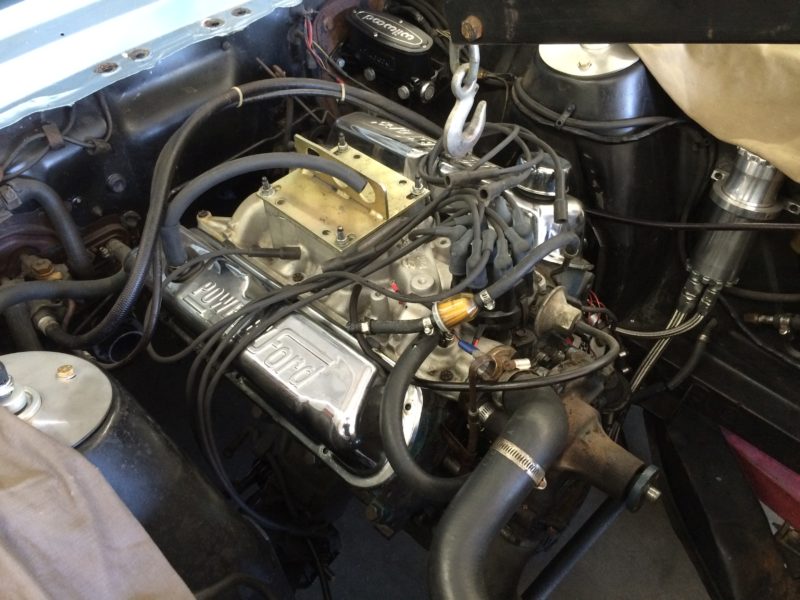
We were a little sad to pull the original 289 from our project, but after 250,000 miles, it’s completely worn out, showing low compression on all cylinders and leaking oil.
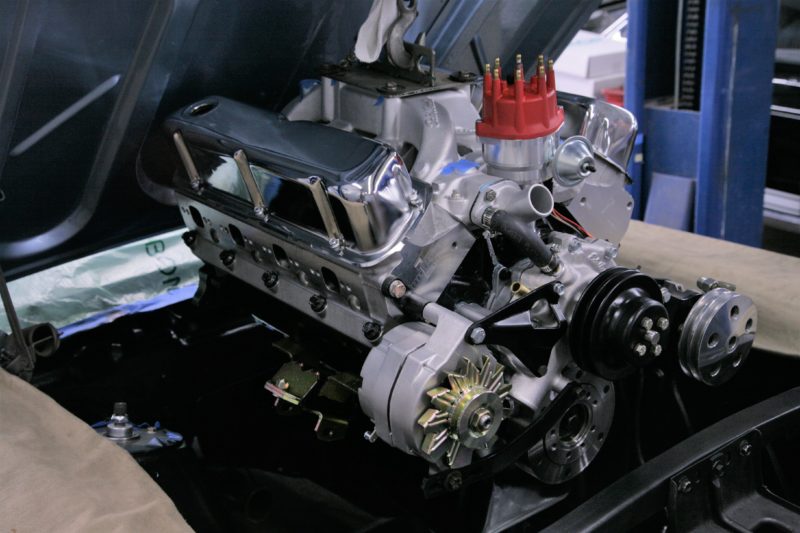
A 351W-based swap is by far the closest thing to a dead drop-in you can get with an original 289/302-powered FoMoCo project. It’s essentially the same block, just with a raised deck height, so it will drop right onto the original motor mounts. It’s really the little stuff that will get you, especially if you changed a lot of stuff like we did. This is our 408 just as we left it from Part 1 of this project.
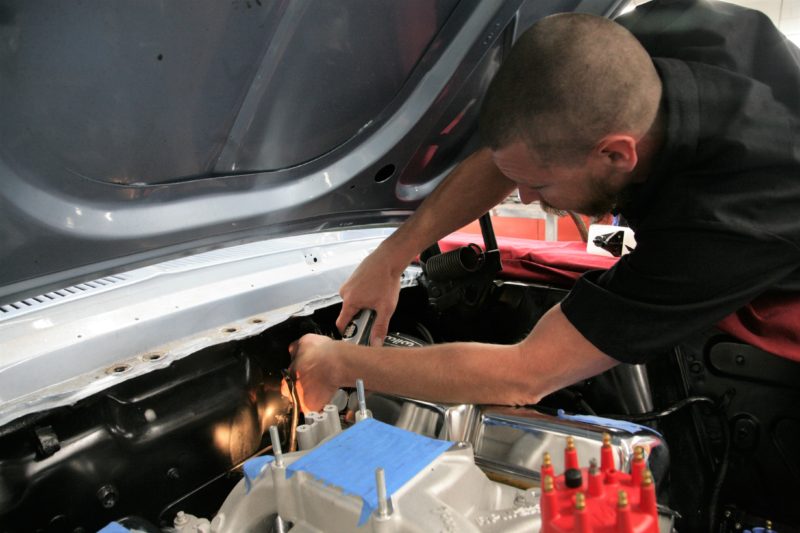
While it may be taller and wider, reaching the top bolts on the bellhousing with a 351W swap is no worse than with a 289 or 302. It’s on the sides and top where things get a bit tight.

Many assume that standard 289/302 headers will fit, but that’s rarely the case. While they will bolt up to the heads, the raised deck height pushes the heads upward and outward, usually killing clearance—particularly on the driver’s side. Fitment gets even more critical if you opted for a Borgeson steering box swap like we did with our RideTech suspension upgrade. These 1-3/4″ stainless steel ceramic-coated headers from JBA (PN: 6613SJS) are the only long tubes on the market specifically designed for a 351W swap that’s using a Borgeson power steering conversion.
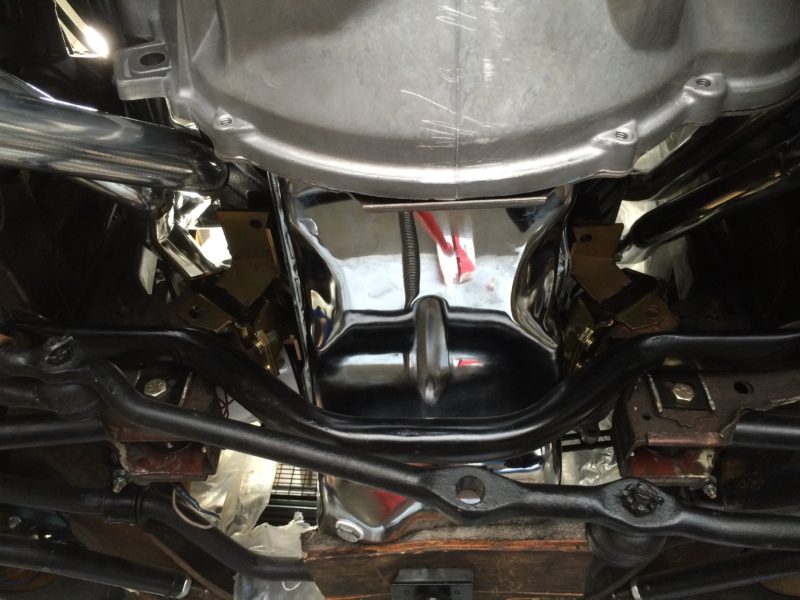
From underneath, you can see that there are miles of room on the passenger side, as usual, but the driver’s side is snug even with the right header. You can also note that we went with Energy Suspension black poly motor mounts vs. stock rubber.
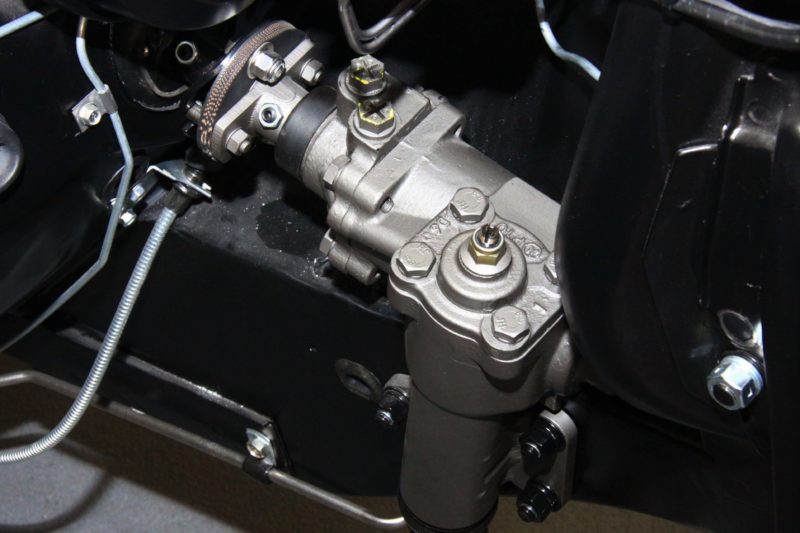
For visual reference, here’s our 14:1 Borgeson power steering conversion box for 1967-1970 Ford Mustangs with 1-1/8” sector shaft (PN: 800111) prior to the engine install. While it is a compact box and a direct bolt-in, it’s how the dimensions change vs. the stock box that can become an issue.
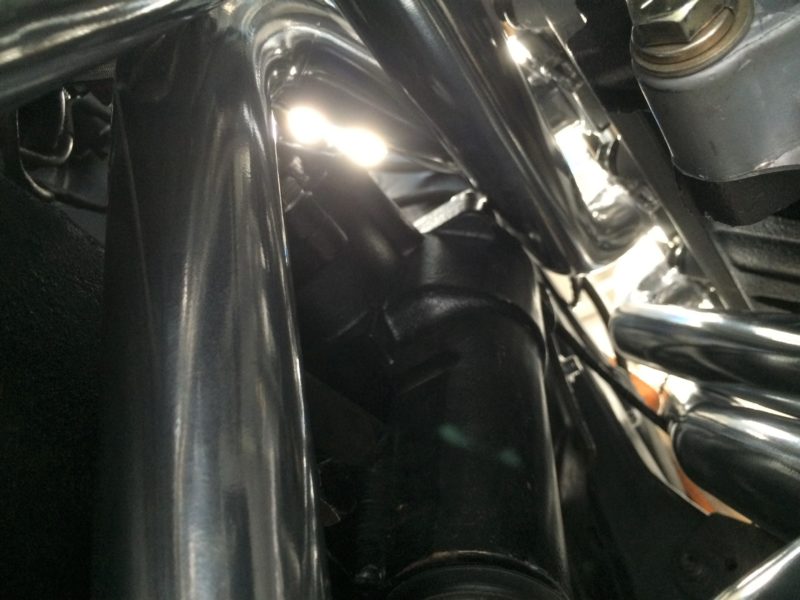
The Borgeson box does not stick out as far toward the engine, but it is taller, so the tubes have to account for that. Looking upward from underneath, even with our JBA tubes bent for exactly this application, it’s a snug fit. This is what everyone online is frustrated about who are conducting searches for a “351W swap” or “Borgeson box swap.”
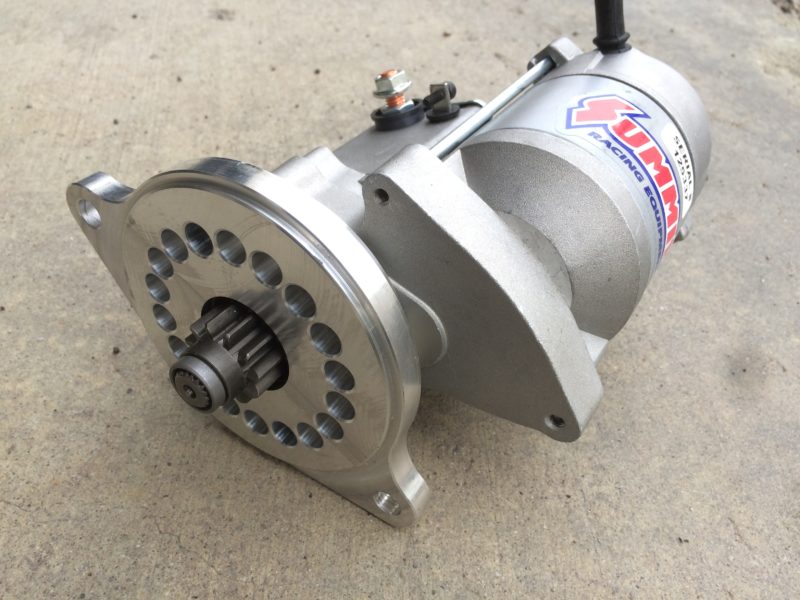
Space isn’t nearly as cramped on the passenger side since there isn’t any steering to route around, but we opted for a Summit Racing high-torque gear reduction starter since its small size keeps it as far as possible from hot header tubes. The clockable mounting plate also makes it ideal for positioning the wires and routing the wires.
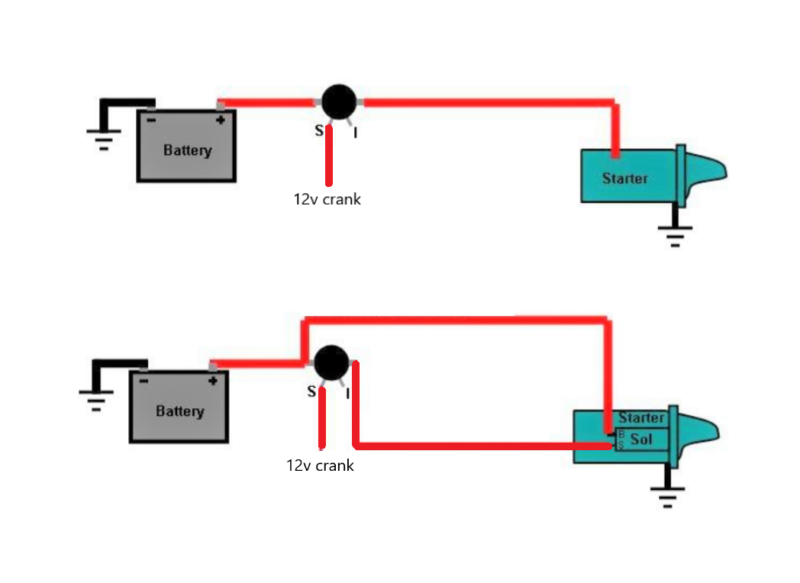
Like most mini starters, the Summit Racing one has a built-in GM-style solenoid. A simple rearrangement of the wiring will get it working with the stock FoMoCo style solenoid.
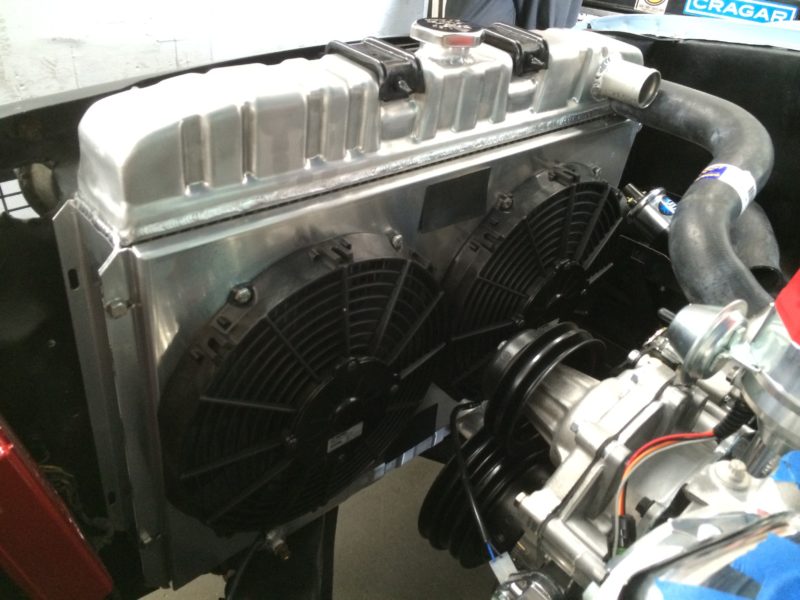
Bigger engines need more cooling, especially if you’re thinking about street cruising with the A/C on during summer, so we opted for a tested and vetted Exact Fit combo from Griffin (PN: CU-70039). The dual Spal fans will raise demand on the electrical system, which is why we upgraded the alternator in the previous installment, but they will also cool more consistently at low rpm and speed and reduce drag on the engine. The kit comes with the necessary wiring and relays, but you will need to add a controller with temperature probe such as Dakota Digital’s Programmable Dual Fan Controllers (PN: PAC-2750).
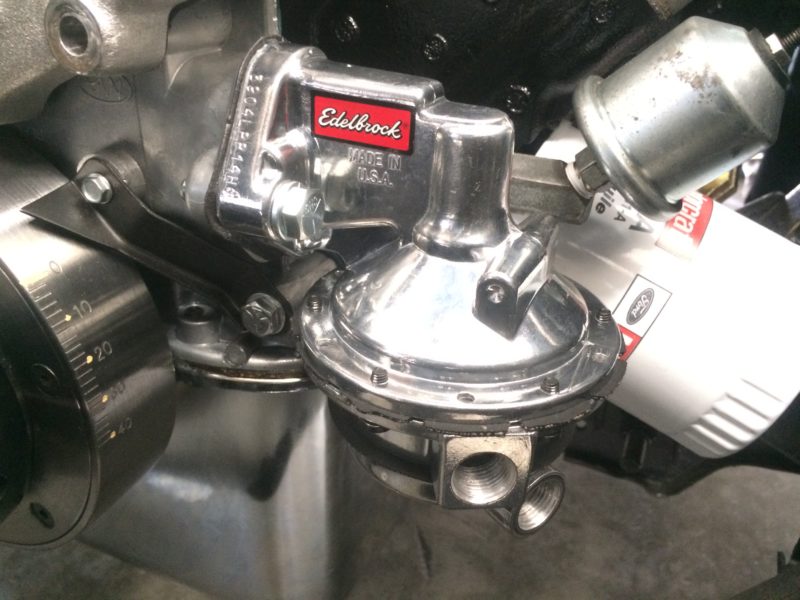
Another place where a clockable housing really comes in handy is the mechanical fuel pump. This Edelbrock pump (PN: EDL-1725) flows 110 gph, and we can place the outlets anywhere we need them. Plus, the polished housing looks great.
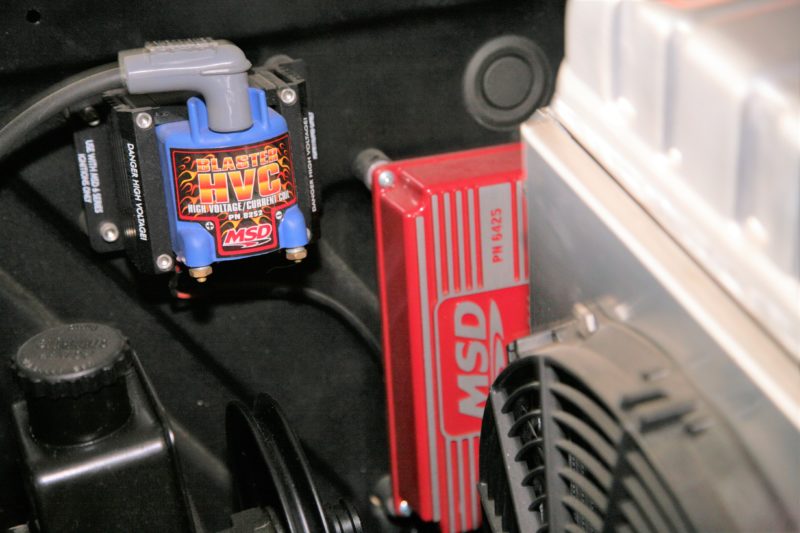
Ignition is what drives an engine, so we always prefer to go strong here. Rather than a traditional canister coil, we went for the more aggressive E-core Blaster HVC (PN: 8252) which is better suited to the Digital 6 AL box (PN: 6425). We also placed it on the inner fender away from the engine to reduce heat soak.

Distributing the spark is our vacuum advance MSD distributor (PN: 8354) and a universal set of MSD Super Conductor plug wires that we cut to fit (PN: 31183). If you’re like us and require neatly routed wires, we highly recommend the MSD wire separators as well. Summit Racing also carries pre-cut sets for Windsor engines. We’ll need to get it on a chassis dyno to really dial it in, but we started with 14-degree initial timing and 34 degrees of total timing.
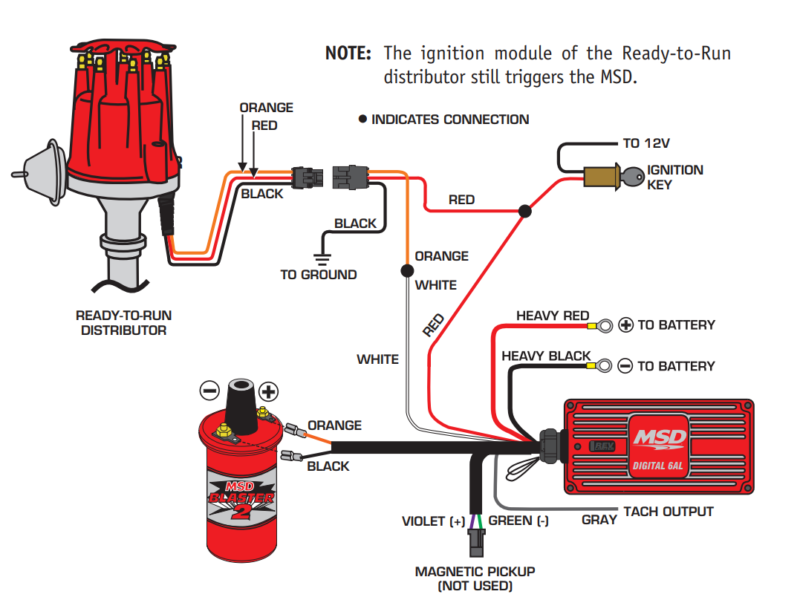
Here’s the correct set-up for our MSD Ready-to-Run distributor paired with a 6AL Digital ignition box. Also worth noting, contrary to some posts we’ve seen online, the 12v feed in the stock engine harness is an acceptable place to pick up 12v ignition.
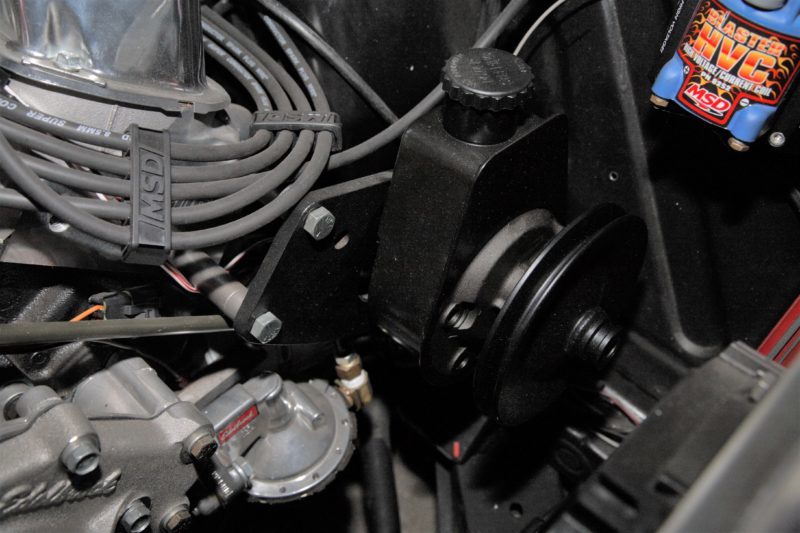
Purists may cringe at the sight of a Saginaw power steering pump on a Ford engine, but the reality is that with the swap, the stock pump just isn’t up to the demands of the Borgeson box. We initially had a different style pump on the 408 in the first installment, but swapped to this pump on Borgeson’s advice. Note the large spacers on the bracket; these will be removed once we install our A/C compressor bracket down the road.

For fuel delivery, we opted for a sleek and stylish Road Demon carb with vacuum secondaries for improved street cruising mpg (DEM-RDA-650-VS). Holley has completely re-engineered and re-calibrated these carbs for better drivability and full throttle performance, and the fuel bowls now have dual threaded inlets on each side, dual sight glass windows, and internal baffling for improved fuel slosh control. That’s a must have if you’re planning to do any autocross work down the road. The Demon needed no adjustment out of the box to run well, but we’ll dial it in on a dyno down the road.
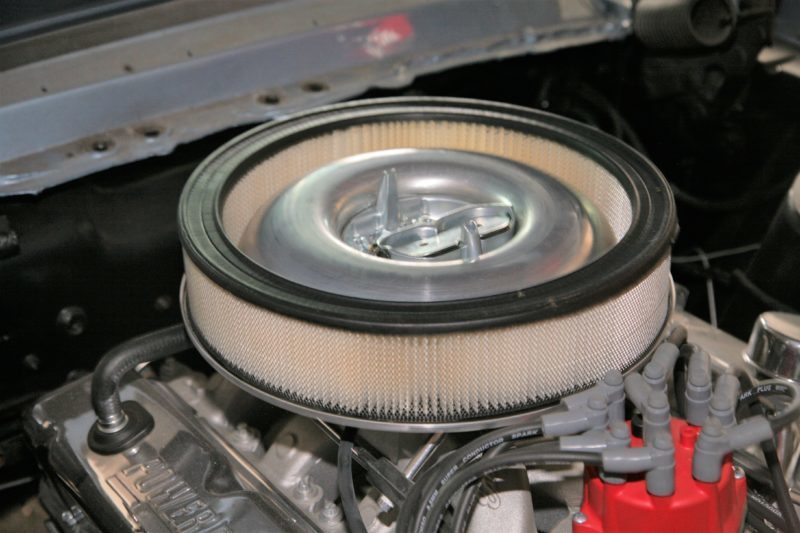
We know some of you have been eyeing that Edelbrock Performer RPM Air-Gap intake and doing mental math with the 351W deck height to see if it will clear the stock ’68 hood. The good news is: Yes, it will, provided you have a deep enough drop-base air cleaner. To allow for a 3-inch tall element for sufficient airflow, we went with an Allstar 1.75-inch drop base (PN: AAF-ALL26092). We topped it off with a stock 289 Hi-Po style lid which looks appropriate, and is nice and flat.
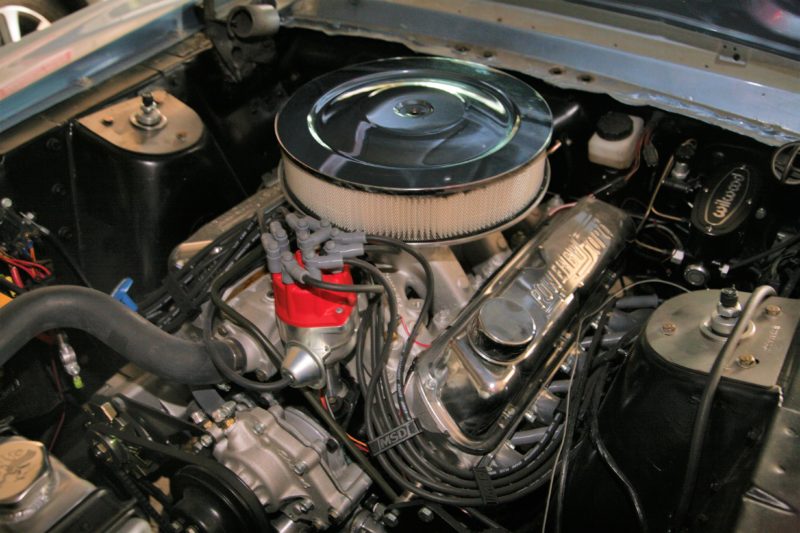
It looks good, nice and simple like that, but sharp eyes surely noted the three-groove crank pulley. We’ll be upgrading and reinstalling the A/C down the line. The good news is that now it’s a runner!
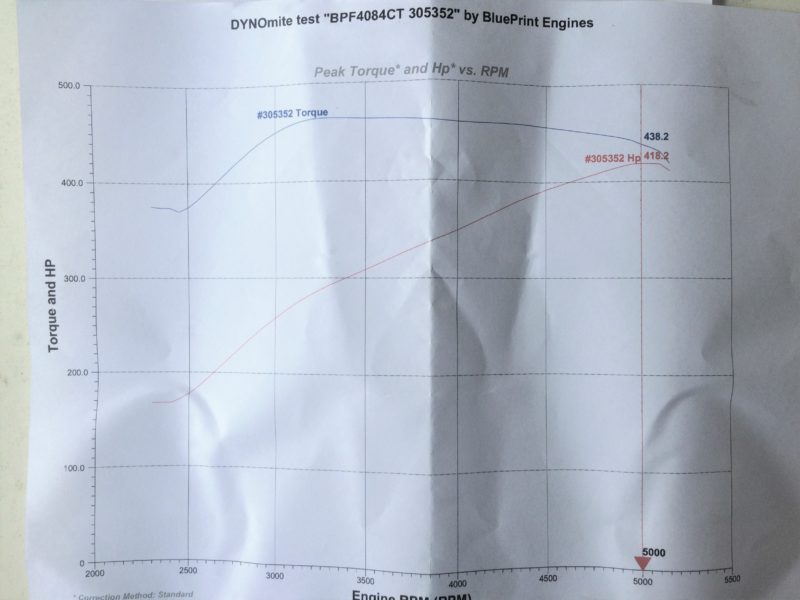
Here’s the actual break-in dyno run for our 408. While it’s a low revver with peak horsepower coming in at 5,000 rpm, that super-flat torque curve is gonna feel great on the street. Could it make another 100 hp with more aggressive heads and another 1,000 rpm? Sure. Probably more. But that’s not what we were after. That long, flat table top of a torque curve that sits well above 400 pound-feet from 2,750 to redline is what we were after.
(All Images by OnAllCylinders contributor Christopher Campbell)

Love your work,I am just attempting the same thing but in a 69 mustang.Would any of the parts you used in the 68 cross over onto my 69;radiator,headers and the like.Or if you have done this before a list of parts used would be handy.
Or even pictures of competed engine bays ,on top and underneath.Any correspondence would be very much appreciated .
Cheers Eric